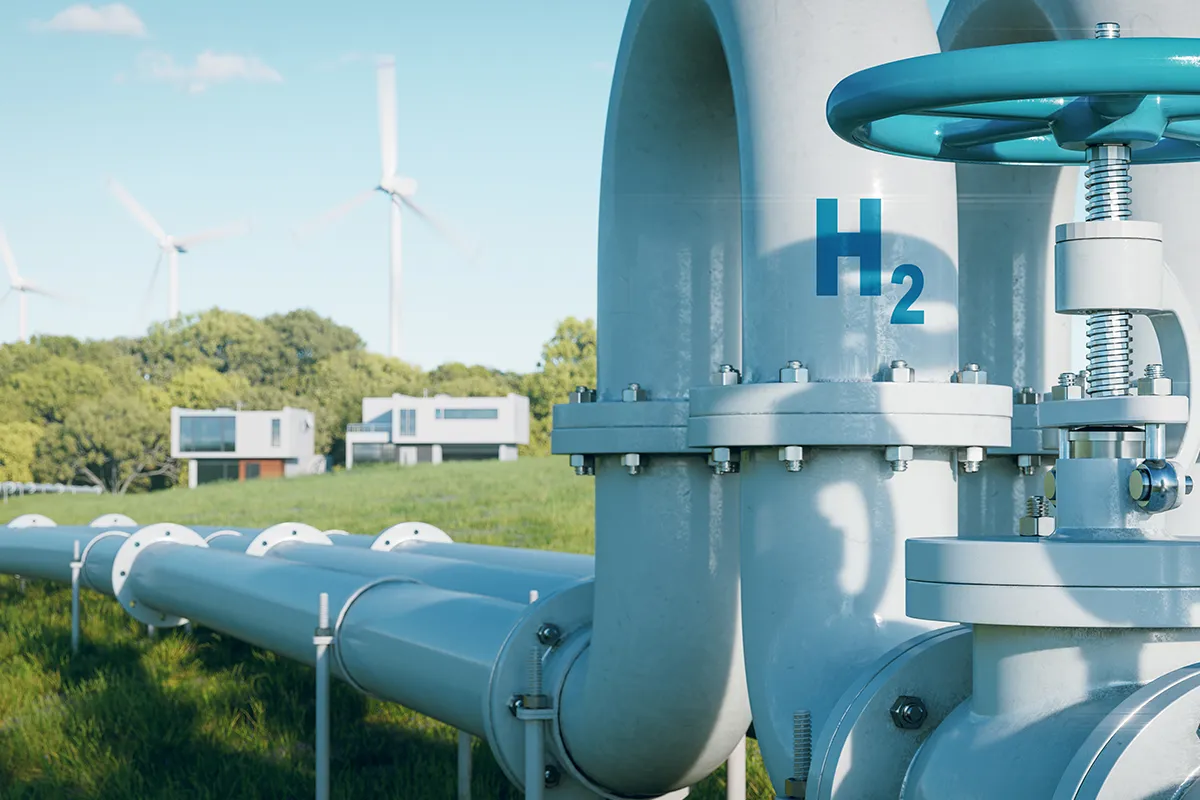In all three stages of the hydrogen value chain, there is a pressing need for digital information. In part three of this four-part series, we’ll explore the third critical piece of the hydrogen value chain and the impact of connected technology across the industry.
Hydrogen, in theory, can be produced anywhere in the world. The most cost-efficient large-scale hydrogen production is happening in specific global regions where the availability of the required input energy is plentiful. No matter how it’s produced, hydrogen needs to be safely transported from the original source and production hub to the end consumers where it can be put to practical use. The transport and storage processes for hydrogen are very similar to those of natural gas. Fortunately, this means that much of the transport infrastructure used for natural gas can be repurposed for hydrogen transport, making it a more cost-effective option than building new. Additionally, a certain percentage of the hydrogen has the ability to mix with natural gas in the existing infrastructure during a transitional period.
By Land… Or by Sea
In the expanding hydrogen economy, experts predict that large-scale pipeline grids will be the go-to transport solution for most forms of hydrogen. Due to the adaptability of the existing and available systems, hydrogen from different sources and producers will very likely be transported via common pipeline grids to consumers, industry stakeholders, storage facilities, and export points. In this case, the pipeline operator is responsible for the safe and fully accountable transport of both hydrogen and natural gas along with any requested mixtures on behalf of the shippers using those pipelines.
These could be dedicated hydrogen pipelines that, eventually, lead to large industrial customers. They could also be natural gas pipelines in which the hydrogen is blended with the natural gas and the pipeline operator is responsible for the safe transport of the hydrogen, natural gas, or a combination of the two on behalf of shippers using the pipelines.
But some areas may be harder to reach, particularly as the popularity of and demand for hydrogen continues to rise in tandem. This means that one of the traditional strengths of liquid energy carriers, and also the hydrogen economy, will have the ability to transport energy by ground systems or marine vessels over large distances between locations where pipelines are not an option.
Thankfully, these transport methods – ground or marine – are possible thanks to similar existing LNG technology, but these methods may require more intensive adaptation. Marine transport will also play a critical role in expanding the hydrogen economy to less resource-dense areas and increasing demand for hydrogen worldwide as the push for renewable energy grows.
In marine transport systems, hydrogen molecules can be transported as liquified pure hydrogen at very low temperatures on purpose-built tankers or carried by traditional chemical tanker ships by conversion of hydrogen into more stable hydrogen-carrying chemicals such as methylcyclohexane (C7H14) or ammonia (NH3). Either way, marine transportation involves critical business processes related to planning, scheduling, cargo management, and terminal operations that would be very similar to how hydrocarbon-based fuels such as crude oil, LPG, and LNG are handled today. In many cases, the ports and berths involved in the current hydrocarbon marine transport would also undergo their own transition towards handling renewable liquid fuels and expect to be able to handle both types of cargo for a significant period.
An Increasingly Connected Industry
Given the capital-intensive nature of developing land and marine infrastructure, it is likely that ownership of many production plants, terminals, distribution networks, and marine operations will be set up as joint ventures. Especially in the early stages of the hydrogen economy that we are now witnessing, where the risks are particularly high since the technology race is very much still ongoing and end-user adoption is immature, this is a quite common approach. With several companies, ownership structures, and commercial models involved, it becomes clear that robust, integrated planning and management software will be critical for these businesses.
“Energy Components supports both the logistical and the commercial business processes related to transportation of hydrogen via pipelines, ground transportation, and marine vessels in a fully integrated solution, giving the operator full transparency of the impacts from schedule changes from one transportation mode to the other,” describes Magnus Ulseth, Director of LNG & Midstream Products at Quorum Software.
Collaborative Digital Solutions
To trade hydrogen as a commodity, the market needs an established physical infrastructure, which includes robust transportation systems for suppliers and consumers alike.
In the transportation process, Energy Components Transport provides functionality to support inventory management, terminal operations, transport optimization, planning, forecasting, pipeline operations, storage operations, and all other processes required to run and improve the operation of a hydrogen storage or transport facility. Energy Components Transport is capable of fully supporting all functionality required for the hourly, daily, and monthly processes, from a single pipeline with a small number of entry and exit points, to the largest transportation grids, for both conventional hydrocarbons and pure hydrogen, or mixtures.
Stay tuned! The final blog in our four-part hydrogen value chain series, focused on storage, will be coming soon. In the meantime, read the complete white paper that explores energy accounting for the hydrogen economy and check out our Energy Components product suite and learn more about the industry’s most comprehensive hydrocarbon accounting and management solution.

 Previous Page
Previous Page